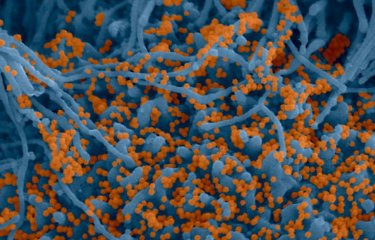-
Document de presse | 2009.12.10
Malaria: a beneficial genetic mutation in South-East Asia
A large-scale evolutionary and epidemiological genetic study carried out over an eight-year period in Thailand has enabled Institut Pasteur and CNRS researchers to demonstrate that a mutation that is particularly widespread in some South-East Asian populations offers a higher level of resistance to malaria. This research, published in the December 11 issue of the journal Science, also reveals...
-
Document de presse | 2009.08.24
Whooping cough: increase in vaccine coverage, decrease in bacterial virulence
The whooping cough monitoring carried out in France has enabled Institut Pasteur and CNRS researchers to analyze Bordetella pertussis, the bacterium responsible for whooping cough. For the first time, among the strains in circulation, they have identified bacteria not expressing some of the virulence factors targeted by the vaccine, such as the bacterial toxin. These observations confirm the...
-
Document de presse | 2009.07.19
How pathogens have shaped genes involved in our immune system
A recent study on human genetics on various populations across the world conducted by researchers from the Institut Pasteur and the CNRS has shown how pathogens can shape the patterns of genetic diversity of our immune system over time. Results show that bacteria, fungi and parasites, unlike viruses, appear to have allowed the introduction of mutations in the genes of some proteins of the innate...
-
Document de presse | 2009.06.10
A major breakthrough in understanding the virulence of the Listeria bacterium in humans
A study carried out by Institut Pasteur researchers in cooperation with Inserm and INRA reveals how Listeria monocytogenes, the bacterium responsible for listeriosis, changes the activity of its entire genome to shift from an inoffensive to a pathogenic state. New types of gene products (RNAs) have been discovered. This research, which appeared in the advanced online edition of the journal Nature...
-
Document de presse | 2009.05.26
The Institut Pasteur and the U.S. CDC sign a Memorandum of Understanding to promote global public health
The Institut Pasteur and the U.S. Centers for Disease Control and Prevention (CDC) signed a Memorandum of Understanding on the occasion of the Assembly of the World Health Organization (WHO), in Geneva, last week. The agreement unites the efforts of these two organizations – both leaders in the field of global public health – by creating a framework for shared and lasting actions to...
-
Document de presse | 2009.05.21
Antibiotic multiresistance: why bacteria are so effective
In an article published in Science, teams from the Institut Pasteur and the University of Limoges, associated with the CNRS and Inserm, decipher for the first time the molecular mechanism that enables bacteria to acquire multiresistance to antibiotics, and that even allows them to adapt this resistance to their environment. This discovery highlights the difficulties that will have to be tackled...
-
Document de presse | 2009.05.17
The Institut Pasteur and Mérieux Alliance take First Step Towards a Long-term Research Partnership in the Field of Infectious Diseases
The Institut Pasteur and Mérieux Alliance have signed a letter of intent for a long-term research partnership. Communiqué de presse Paris, lmay 18, 2010 The Institut Pasteur and Mérieux Alliance (which comprises the companies: bioMérieux, Transgene, Shantha Biotechnics, ABL and Silliker) would like to pool their resources and efforts to fight infectious diseases...
-
Document de presse | 2009.04.07
HIV/AIDS and developing countries: bathroom scales to improve monitoring of patients receiving antiretroviral therapy?
In developing countries, where access to laboratory tests remains limited, could use of a criterion as simple as weight gain improve the management of HIV-infected patients receiving antiretroviral therapy? This is what has been suggested by a research published in the AIDS journal and conducted by researchers from the Institut Pasteur in partnership with Médecins Sans Frontières. Now that access...
-
Document de presse | 2009.03.30
Rabies in Africa : from its origins to the current fight
Today, Africa is the second continent most affected by rabies, after Asia. A recent study conducted by Institut Pasteur researchers retraced the origins and evolution of the disease in Western and Central Africa, and revealed that the emergence and the dissemination of the rabies virus coincided with the beginning of European colonization. In addition to its historical value, this research also...
-
Document de presse | 2009.03.17
The biodiversity of microorganisms: EMbaRC, a European program for the conservation and promotion of microbial resources
A European consortium of microbial resource centers was launched on March 18, 2009. Known as EMbaRC, its particular objective is to harmonize systems of keeping and identifying bacteria and microscopic fungi in the different European countries, and also to develop DNA banks and strengthen bio-security. In this way it aims to encourage the conservation and promotion of microbial biodiversity....


